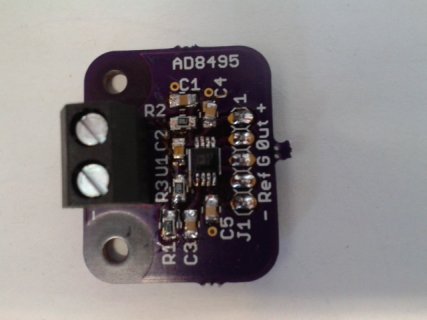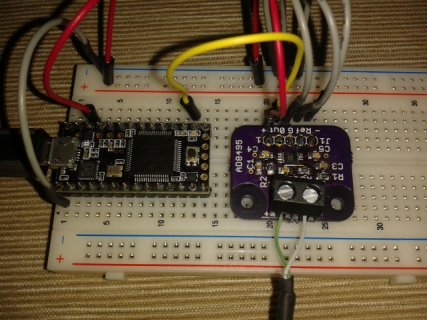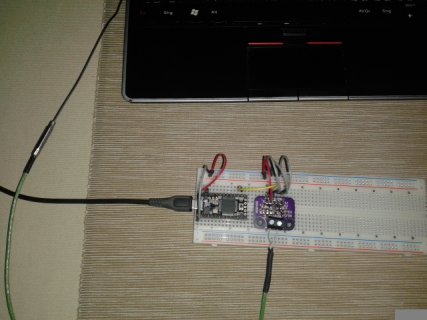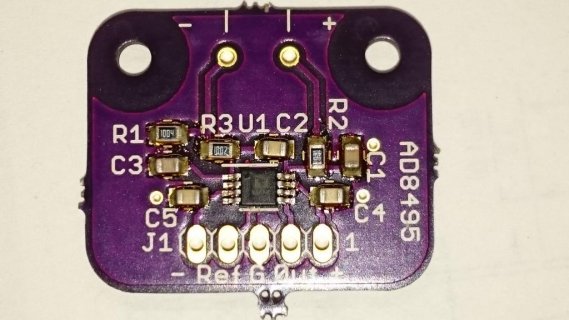Because I wanted to try OSH Park and needed a breakout board for the AD8495 thermocouple amplifier, I created one and had it made.
Naked and good-looking:

Assembled and ugly:

Schematic:

I tested it with an AD8495, type K thermocouple and a Teensy++, which worked right away.
Hackaday project page: http://hackaday.io/project/1758-AD849x-breakout-board
OSH Park: https://oshpark.com/shared_projects/QypWyps2
github: https://github.com/crteensy/AD849x-breakout-board
Regards
Christoph
Naked and good-looking:

Assembled and ugly:

Schematic:

- It is very similar to the adafruit breakout board, but supports dual supplies and a reference input for offsetting the signal.
- All caps and resistors are 0805, which is the smallest I can hand-solder without freaking out.
- Non-plated mounting holes for M2.5 screws that can be enlarged for M3, and the free area around them is large enough for an M3 washer.
I tested it with an AD8495, type K thermocouple and a Teensy++, which worked right away.
Hackaday project page: http://hackaday.io/project/1758-AD849x-breakout-board
OSH Park: https://oshpark.com/shared_projects/QypWyps2
github: https://github.com/crteensy/AD849x-breakout-board
Regards
Christoph
Last edited:




